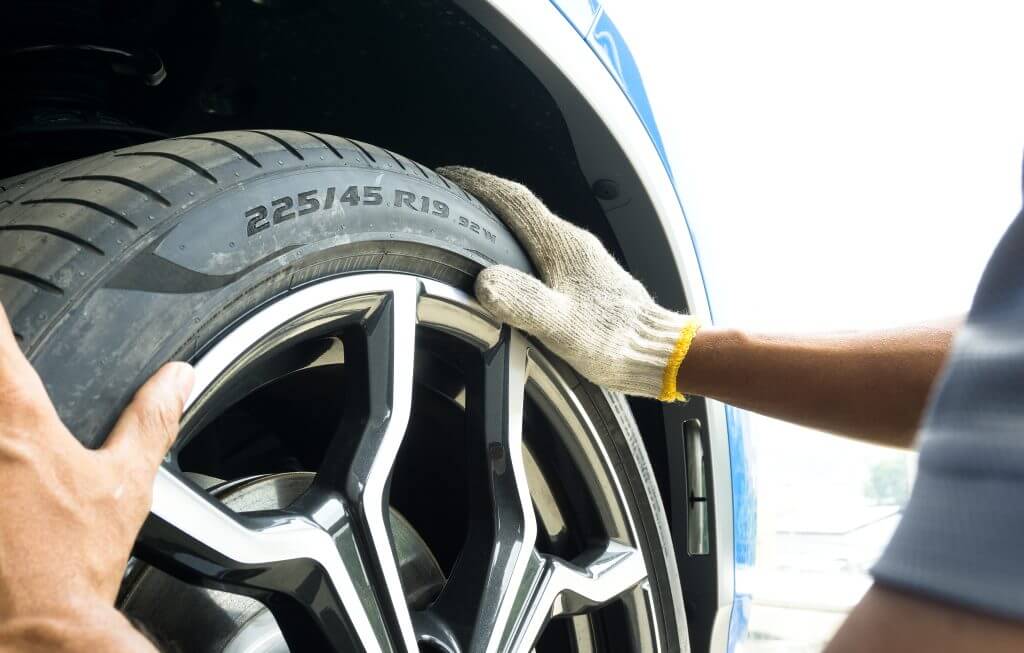Vehicle tires are not only crucial for ensuring safe driving but also play a significant role in the overall performance of your vehicle. Therefore, understanding tire markings is essential to ensure that the tires chosen are suitable for your vehicle’s needs.
In this article, we will discuss the steps to read and understand the markings on tires, helping you make the right choice while maintaining driving safety and performance.
1. Understanding Tyre Size
One of the most important markings on a tire is its size. The sidewall displays key information, such as size, load capacity, and speed rating. Tire size is typically written in a combination of numbers and letters that may seem complex, but they are easy to understand once you know what they represent.
For example, a common tire size is 215/60 R16. Each number and letter has its own meaning:
- 215: Refers to the width of the tire in millimeters.
- 60: The aspect ratio, which is the percentage of the tire’s height compared to its width.
- R16: The diameter of the rim in inches.
Accurately reading the tire size ensures that the tires installed on your vehicle match its specifications. Choosing the wrong tire size can negatively affect the vehicle’s efficiency, stability, and safety.
Familiarizing yourself with these markings ensures safety, performance, and compatibility with your vehicle.
2. Load Index and Speed Rating
The load index and speed rating are two other critical pieces of information found on a tire. The load index shows the maximum weight a tire can carry, while the speed rating indicates the maximum safe speed for the tire, represented by a letter symbol.
For example:
- 91: The load index, meaning the tire can support a maximum load of 615 kg.
- V: The speed symbol, indicating the tire can be safely used at speeds of up to 240 km/h.
It is crucial to select tires that match your vehicle’s weight and speed requirements. Using tires with an incorrect load index or speed rating can compromise the safety and performance of your vehicle.
3. Tyre Manufacture Date
Another important marking to look for is the tire’s manufacture date. Every tire has a code that provides information about where and when it was produced. The key part of this code is the last four digits, which represent the week and year of production.
For example, if the code reads 1423, it means the tire was manufactured in the 14th week of 2023. It is important to ensure that the tires you use are not too old, as older tires may lose their elasticity and performance, even if they have never been used. Generally, tires older than six years are considered unsafe for use.
4. Recommended Tyre Pressure
Maintaining the correct tire pressure is essential for safe and efficient driving. Underinflated tires increase friction between the tire and the road surface, leading to higher fuel consumption and faster tire wear. On the other hand, overinflated tires reduce the tire’s grip on the road, increasing the risk of accidents.
Recommended tire pressure is usually indicated on the tire sidewall or on a sticker located on the vehicle’s door frame. Tire pressure is measured in psi (pounds per square inch) or bar. Regularly checking your tire pressure and adjusting it based on vehicle load and weather conditions ensures optimal tire performance and longevity.
5. Tread Pattern
The tread pattern on a tire plays a vital role in ensuring good traction on the road. It is designed to channel water away from the tire surface, reducing the risk of aquaplaning, particularly on wet roads.
There are various types of tread patterns suitable for different driving conditions:
- Symmetrical: Suitable for regular driving, providing stable grip on both dry and wet roads.
- Asymmetrical: Designed for optimal performance on various surfaces, with the inner part of the tire dispersing water and the outer part offering better grip on corners.
- Directional: Often used on high-performance vehicles, these patterns help efficiently drain water, improving grip on wet surfaces.
Regularly checking the condition of your tire’s tread pattern is important to ensure even wear. Rapid tread wear may indicate alignment issues or incorrect tire pressure.
6. Tread Depth
Tread depth is another crucial factor that affects tire performance. Worn-out tires lose traction, especially on slippery roads. Most countries recommend a minimum tread depth of around 1.6 mm, but for safer driving, it is advised to replace tires when the tread depth reaches 3 mm.
You can use a simple tread depth gauge available at tire shops or perform an easy check by inserting a coin into the tire grooves. If most of the coin is still visible, it’s a sign that your tires are worn and need to be replaced.
Conclusion
Understanding tire markings is key to ensuring safety, performance, and efficiency on the road. By familiarizing yourself with tire information, you can make informed decisions when selecting tires for your vehicle.
Don’t forget to regularly check the condition of your tire’s tread pattern and depth to ensure they remain in good shape. For high-quality tires for your vehicle, visit Tayaria Tire Shop. Check out our exciting promotions and browse through the best tire options in Malaysia!




